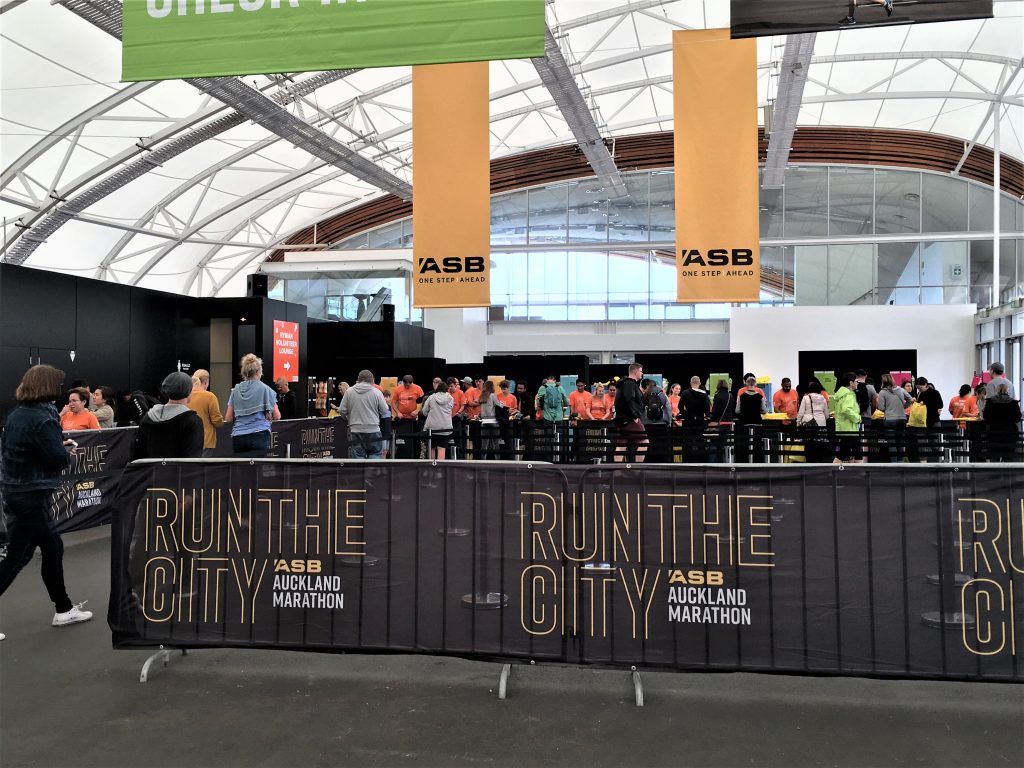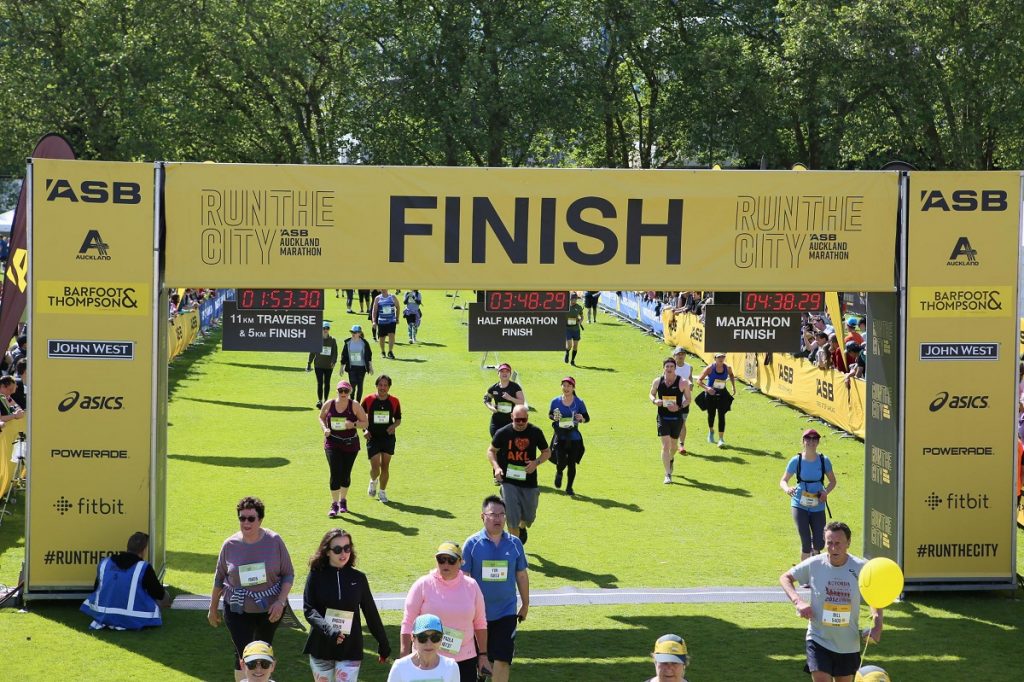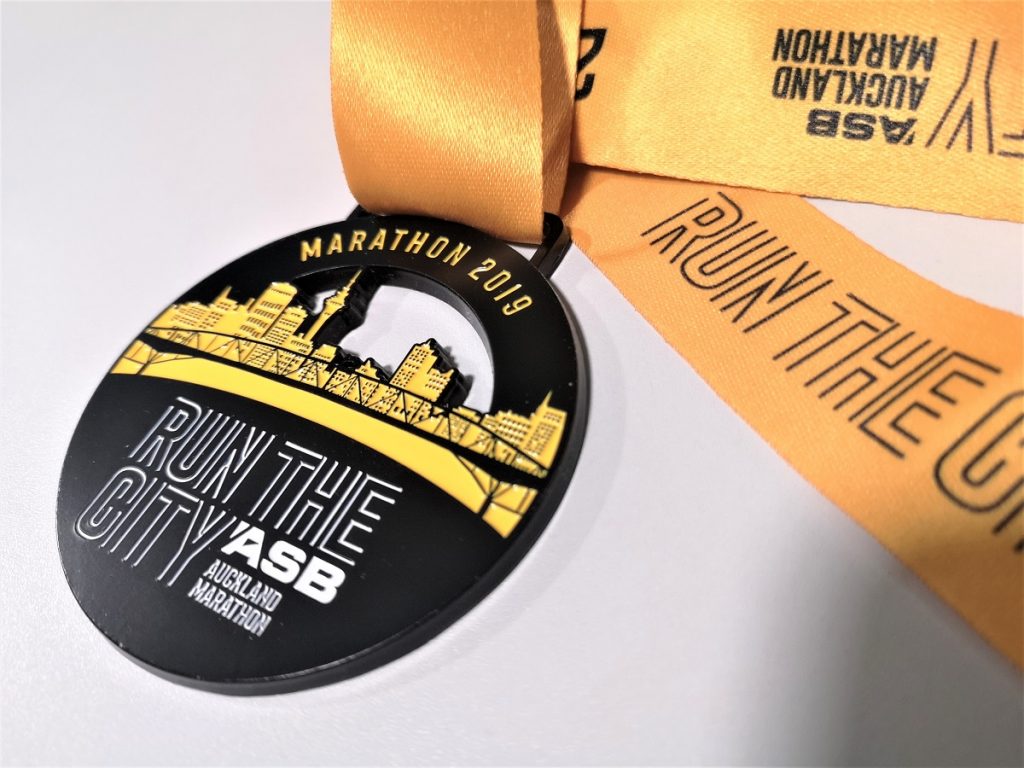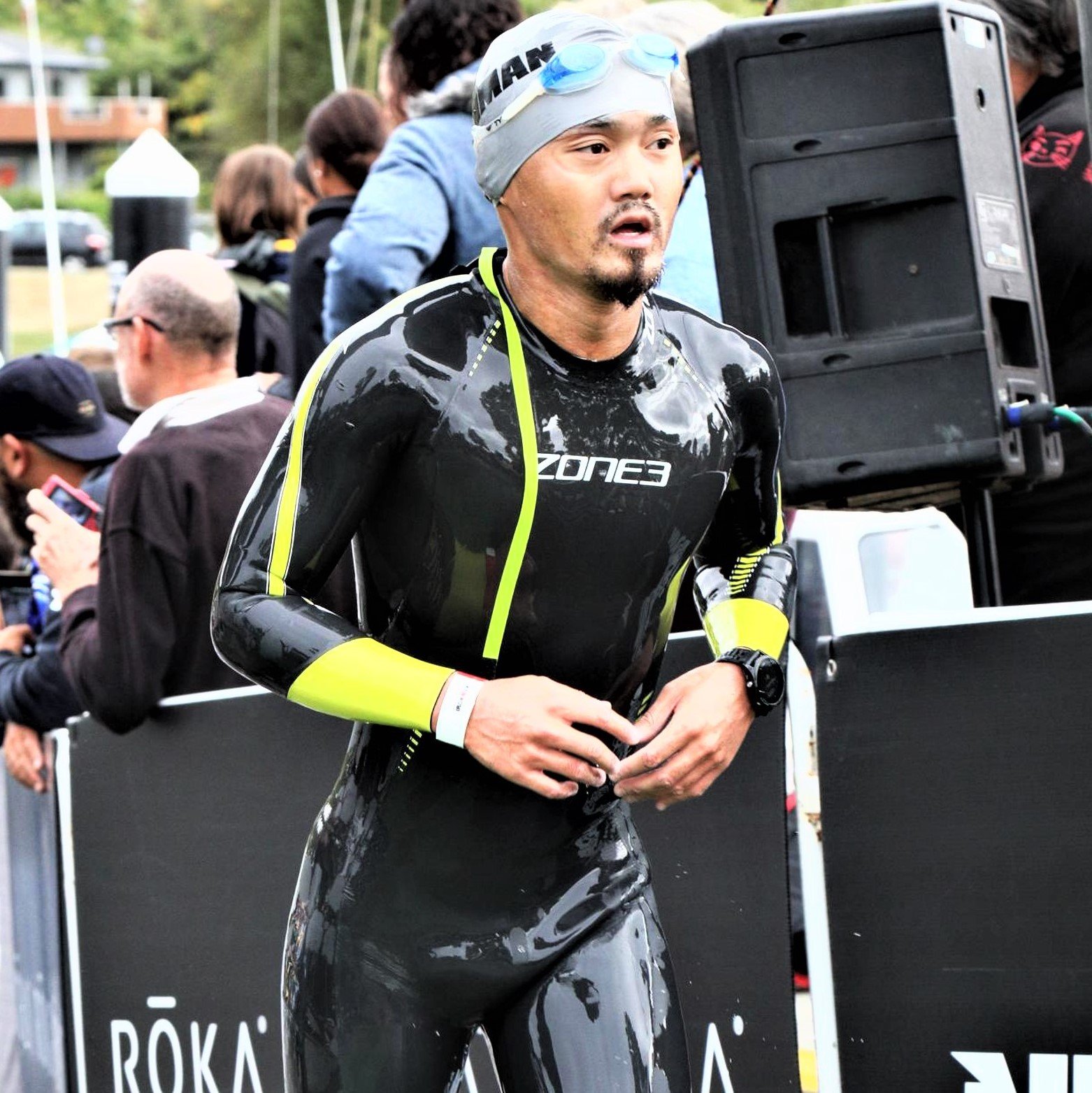Swapping hemispheres this winter to take on New Zealand’s biggest marathon?
The Auckland marathon is a mid-sized and incredibly well organised event, starting from the city’s North Shore, crossing the harbour bridge, and ending in the city centre. As you know we’re running nuts here at Fit Brit, and several of the team have conquered 42.2’s around the world. If you’re after a destination race this season, Auckland is definitely recommended!
For those of you who have signed up and are in training, here is my collection of Auckland marathon tips. Remember, during long races, familiarity is a big advantage. Especially if this is a destination race, or you’re first timer, you may not have the time/opportunity to run the course beforehand, but reading about it is the next best thing. Here are 21 tips to help you cross the finish line and nail your goals on race day.
Race Week
1. Relax after your flight
If you’ve travelled from overseas, chances are you’re going to be jet lagged and tired. That’s not necessarily a bad thing – you’ll need to be awake by 4 am on race day to make the 6 am starting gun. However, do make sure to get enough rest and lots of fluids. Try to keep any training runs short and low intensity. Anything over six or seven kilometres during race week is pushing the limit. You may also find your feet and legs have some swelling after the long flight – if this is the case, compression socks are your friend. In the days pre-race, live in them!
2. Eat well and hydrate
Race week is all about getting yourself as fresh as possible for the big day. Hold off on the junk food until after the race. Besides, New Zealand has some of the finest produce and whole foods in the world! If you’re a carb-loader, get in your sweet potatoes, rice, grains and fruits. If you’re a fat-adapted racer, indulge in New Zealand’s amazing fresh salmon, grass fed butter and dairy, and pastured beefs. Whatever your dietary strategy is, New Zealand will have you covered. Also, drink! No, not beer (though their beers are fantastic), it’s water you should be sucking down day and night. The more you hydrate during race week, the stronger you’ll be on race day.
3. Go to the athlete check-in early
If you’re a visiting racer, make sure you check in on the first day. In case there’s anything wrong with your entry, you’ll have a few days to sort it out. You can also sort out any supplies you might need, such as gels or racing belts or anything else, as the expo will have literally everything a runner could wish for.

4. Deposit special drinks!
Auckland is one of the few races that allows all runners to deposit special drinks, a privilege usually reserved for the pros. This means before each aid station, there will be a “Special Drinks” table with your own personal drinks laid out for you. This way, you avoid the crowd at the standard aid station, and can take in your fluids through a bottle instead of trying to drink awkwardly from cups. It’s also especially handy if you need something specific for your fuelling, MCTs or ketone drinks, or a specific brand of carbs/electrolytes. Of course there is nothing wrong with the Powerade and water provided at the aid stations, but it’s great to have this option available. To deposit special drinks, you simply tag them and hand them in at the special drinks desk at the athlete check in.
5. Arrange your transport for race day
The Auckland marathon starts on the North Shore, which is across the harbour from the city centre. Lots of roads are closed on race morning, so your transport needs to be arranged beforehand. The race organisers do a great job of providing transport for athletes. If you’re staying in the city, the ferries are all arranged and take you straight to the start line, but you need to buy a ticket at the athlete’s check in. If you’re staying on the shore, buses will be arranged. Make sure you know exactly how you’re getting to the start line on race morning. Being stranded and stressed out is the last thing you need before your big race!
If you’re unsure of your race-day transport, just visit the transport desk at the athlete’s check in.
Race morning
6. Wake up early
Especially if your’e catching the ferry, there are no reserved seats – it’s first come first served, and the ferries simply leave when they’re full. If you get to the start line late, that’s on you. Ideally you want to be at the ferry building before 5am – but I’d aim to get there around 4:30 at least, just to be safe.

7. Seed yourself properly
Auckland marathon is not a crowded race, there’s usually a little over 1,000 runners. However it’s still beneficial to make sure you’re seeded right, so you’re not constantly weaving past people, or constantly being overtaken by faster runners. They usually seed in 15 minute increments, and there are pacers for every group.
Kilometres 1-5
8. Start slow!
Remember, starting too slow is not a big mistake, but starting too fast is. If you hit the gas too hard too early, you’ll suffer for the entire race. It’s really easy to let race day adrenaline get the better of you, so make a conscious effort to start slow. Even if you’re below your target pace for the first few k’s, that’s fine. The time to run hard is on the last five, not the first! Auckland marathon starts with a mild hill, so it’s best to take it easy anyway. The second half of the marathon is all flat, so don’t worry about a slow start.

9. Focus on hitting the first aid station
Marathons are all about mini-goals, so just focus on hitting your first checkpoint. You’ll hit the first aid station after 4km on Winscombe Street. There will be a handful of toilets, but not many, maybe three or four. Make sure you hydrate well here to set yourself up for a strong first quarter. You will almost certainly lose sweat faster than you can replace it, so hydrating well at every station is important. There is also 5km until the next aid station, further than usual, so hydrating well at Aid Station 1 is doubly important.
Kilometres 6-10
10. Get on pace
By now you should be warm and lubricated, it’s time to make sure you’re at your target race pace. It’s also a good time to get into a pacer group, if you didn’t start in one. If you’re feeling tired, it will be mostly in your mind. Remember, you trained for this! You’ll run through a bunch of quiet residential streets which should be wide and uncrowded, so you can focus on knocking off kilometres. There will be a few inclines, but nothing serious. You will hit the second aid station after 9km on Taharoto Road.
Kilometres 11-18
11. Prepare for the bridge
You’ve just knocked off the first quarter. Nice work. There is an aid station at 12km, and it’s an important one. Get a lot of fluids in. Try and keep your heart rate down and steady. Not long after you leave that aid station, you will hit the hardest part of the course. Deep breaths and relaxed strides will help keep your heart rate down so you’re fresh and ready!
12. Conquer the bridge!
Running over Auckland’s harbour bridge will be the longest hill of the race. It is steeper and longer than it looks from a distance. Many people walk the bridge. The incline goes on for around half a km, until it levels off and starts to descend. Everybody has their own strategy for running hills. Some like to knock them off as fast as possible, others walk them to avoid beating themselves up too much. There is no right way – the only goal should be to get to the top in good shape. Whatever method is best for you, do that.
13. Care on the descent
The way down is around as steep as the way up. Again, descend the best you can. For some, running downhill carries a bigger risk of injury than running up. Just remember once the bridge is done, the course will wind a little bit through the suburbs and then will be completely flat for the second half. Get over the bridge fresh and you’ll be in good shape! At the bottom of the bridge, you’ll hit Aid Station 4, on Curran Street. A well deserved one. Drink up!
Kilometres 19 – 25
14. Focus on getting to halfway
The course will take you through some suburbs around the bridge, and you’ll hit Aid Station 5 at 20km, just before you start entering the city. Then you run a few streets on the city skirts before you finally hit the halfway mark. A big sign will usher half marathoners off to the right towards the finish line at Victoria Park. Full marathoners (that’s you!) will turn left onto the Auckland waterfront. The halfway mark is a big morale booster in the marathon. The crowd thins out a lot, leaving just the big boys and girls. You’ll get to Aid Station 6 at 23km. There will be zero crowds at the aid stations now, and hopefully you won’t need to wait for toilets either. Just focus on running!
15. One kilometre at a time
Once on the waterfront, every kilometre is marked with big signs. At this stage of the race it’s all about mini goals. Every kilometre is a win. Depending on the weather that day, you should get a nice ocean breeze running right by the water. As long as its not too strong, it should be quite pleasant. Just remember, one kilometre at a time. You will have been here before in training, so keep your mind right, focus on keeping good strong form and knock those babies off one by one.
Kilometres 26-32
16. Focus on your own race
Around this time you will start to see people on the opposite side of the road already running their return leg back to the city. Don’t be intimidated or discouraged by this – they are running their own race and you’re running yours. There will be a good number of spectators along this part of the race. Many of them will cheer for you. Try and feed off their energy.
17. Remember to smile
Kilometres 26-32 take you past the sailing and kayaking club at Okahu Bay, a few of Auckland’s parks and beaches and finally to the turnaround point at Mission Bay. Here you’ll do a U turn and head back towards the city. These kilometres are the toughest part of the race for many, just because it’s when glycogen stores start to run low and bonking becomes more common. There are two aid stations very close together, at 27km and 29km. Use them both well! And when everything hurts, which it probably will, just remember to smile. You’re not far now, don’t give up. You’re about to become legendary!
Kilometres 33-38
18. Remember why you’re here
They say the first 32km of a marathon are run with your legs, the final 10km are run with your mind. Everybody has a reason for taking on the impossible race. Whatever you’re running from, whatever you’re running towards, keep this in your mind and in your heart. Write it on your arm before the race. Paint it on your shirt. Anything to remind you why you’re here. No piece of advice can get you through these tough kilometres better than the words you tell yourself in these moments. Remember why you’re here and your legs will keep on going.
You’ll hit aid stations at 33km and 36km on the return leg. Suck some fluids down, grind your teeth and get moving. You’ve made it this far, champ. You’re not giving up now.
Kilometres 39-42
19. Enjoy it!
These are your final 3km. How many times have you run 3km in training? More than you can remember. So you know you can do it. Run hard now with everything you’ve got. Leave it all on the course!
You will hit one final aid station at 40km. It will be serving Powerade, water and also flat Coke. If you want a final sugar boost for the final stretch, take a cup. You can even take a few. Two more kilometres and you’re home.
The spectators will also start to thicken here. Your name is written on your race bib, so people will be cheering for you. You will veer through some city backstreets and office parks, then you’ll emerge where the course split the marathoners and the half marathoners earlier. Now it’s your turn to hit the finishers chute, so you’ll run through towards Victoria park, through a crowd of supporters and under the big FINISH arch.
Congrats! You’re a marathoner!

Post race
20. Get some calories and fluids
Once you collect your medal, the team will give you something to eat and drink, most likely a Powerade and a banana or a snack. You might not feel like eating or drinking, but it’s important that you do. You’ve just put your body through a war and it will need some nourishment.
21. Stretch before you get cold!
Things are going to be sore, but if you want things to be less sore tomorrow, make sure you take a moment to stretch. It’s probably the last thing you want to do, but even five minutes of stretching will make a big difference. There will be a big finisher’s expo going on at Victoria Park, where you can relax on the grass and walk around the different stalls. Try not to sit still for too long. Take ten minutes to sit and rest, then take a short wander around before sitting again. Sitting in one spot for too long will result in some very sore and tight muscles the next day.
22. Wear your medal and be proud, you did it!
Hang your medal on your wall, post photos of it to Instagram and Facebook, tell everyone how proud you are. It’s not bragging, and even if it is, you earned it! Not many people will run a marathon in their lifetime, and they’re only achieved after months or even years of hard work and discipline. Be proud of what you’ve achieved, you deserve it. Congrats!

References:
- https://aucklandmarathon.co.nz/athlete-info/training-info/
- https://www.nzherald.co.nz/sport/news/article.cfm?c_id=4&objectid=12149559
- https://www.stuff.co.nz/auckland/116515630/auckland-marathon-road-closures-aid-stations-and-the-distance-you-need-to-run
- https://raceraves.com/races/auckland-marathon/
- https://worldsmarathons.com/marathon/auckland-marathon

